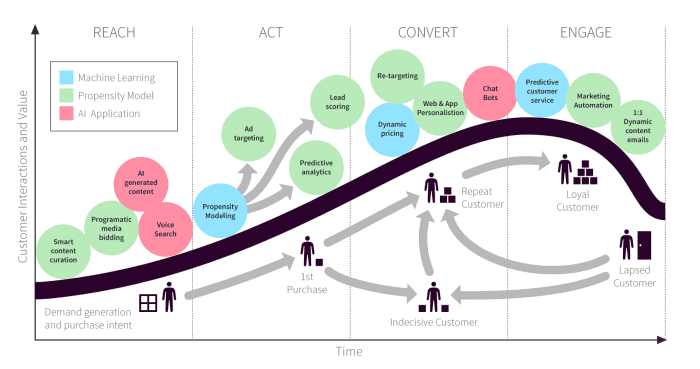
Ecommerce Cost Optimization: 10 Ways to Reduce Costs
Pranay Agrawal | March 3, 2025 , 15 min read
Table Of Content
In the fast-paced world of e-commerce, staying competitive and profitable can be a challenging task. With rising operating costs and increasing competition, online businesses must find ways to cut expenses and make cost-effective decisions.
By leveraging data analytics techniques such as data visualization, Excel, Power BI, and SQL, online retailers can gain valuable insights into their operations and identify areas of high expenditure.
In this article, we will explore 10 ways that can help you reduce e-commerce costs.
Key Takeaways
- Minimize Product Returns & Improve Customer Service: Use data insights to reduce return rates, enhance product accuracy, and improve customer support.
- Optimize Inventory & Supply Chain Management: Leverage demand forecasting, optimize stock levels, and negotiate better supplier and logistics terms.
- Implement Smart Pricing & Targeted Marketing: Use dynamic pricing, segment customers effectively, and focus marketing spend on high-ROI channels.
- Improve Website Performance & Customer Experience: Enhance site speed, fix customer journey pain points, and invest in scalable technology.
- Automate Business Operations for Efficiency: Streamline order processing, inventory management, and customer support through automation.
- Lower Customer Acquisition & Marketing Costs: Identify cost-effective channels, optimize ad spending, and leverage organic growth strategies.
Understanding Ecommerce Cost Optimization
Ecommerce cost optimization is the strategic methodology for minimizing operating expenses while delivering efficiency and optimizing customer experience. It includes(but is not limited to) the analysis of multiple business processes like inventory handling, logistics for the supply chain, marketing, and IT infrastructure for opportunities for cost reduction without sacrificing the quality of the service.
A well-optimized e-commerce business is not only focused on cost reduction but also strategic investments. Based on data-driven insights, processes can be automated, redundancies can be eliminated, and maximum ROI can be achieved.
This includes optimizing the price strategy, eliminating redundant costs, and optimizing the workflow automation for establishing a profitable and sustainable online store.
Key areas for ecommerce cost optimization
- Operational Efficiency: Minimizing repetitive processes and optimizing the levels of inventory for lower holding costs.
- Marketing Optimization: Optimizing the ad budget by allocating resources to high-performing channels and applying customer segmentation for efficient targeting.
- Supply Chain and Logistics: Negotiating suppliers for lower rates and route optimization for lower shipment costs.
- Technology and Infrastructure: Investing in scalable solutions for optimizing website performance and customer experience while minimizing maintenance costs.
10 ways to reduce e-commerce costs
1. Reduce Product Returns
Product returns can be a significant drain on e-commerce businesses, resulting in lost revenue and additional expenses. By utilizing data analytics, online retailers can identify patterns and trends that contribute to high return rates and take proactive measures to reduce them.
For example, analyzing customer feedback and product reviews can provide insights into common reasons for returns, allowing businesses to address these issues and improve product descriptions and images to set accurate customer expectations.
Additionally, extending the return period can reduce the pressure on customers to return products immediately, giving them more time to make a final decision and potentially reducing return rates.
Also Read: Complete guide to e-commerce app development cost
2. Optimize Inventory Management
Effective inventory management is essential for reducing costs in e-commerce. By leveraging data analytics, businesses can gain visibility into their inventory levels, demand patterns, and sales performance.
This information can help them optimize their inventory levels, reducing the costs associated with excess stock and storage. Through techniques such as market basket analysis, businesses can identify product associations and bundle slow-moving items with popular products to increase sales and reduce stagnant inventory.
Moreover, by analyzing historical sales data and using demand forecasting models, businesses can make more accurate inventory replenishment decisions, minimizing the risk of stockouts and the associated costs.
3. Negotiate Better Terms with Suppliers
Effective supplier management can significantly impact the cost structure of an e-commerce business. By leveraging data analytics, businesses can analyze their purchasing patterns, identify key suppliers, and negotiate better terms.
For example, by consolidating orders and increasing order sizes, businesses may be able to negotiate volume discounts or favourable payment terms. Additionally, by analyzing supplier performance data, such as on-time delivery rates and product quality, businesses can identify underperforming suppliers and negotiate better terms or explore alternative options.
Data analytics can provide the necessary insights to strengthen supplier relationships and drive cost savings.
4. Optimize Pricing Strategies
Pricing plays a vital role in the profitability of an e-commerce business. By utilizing data analytics, businesses can analyze customer behaviour, competitive pricing, and market trends to optimize their pricing strategies.
Through techniques such as price optimization and dynamic pricing, businesses can identify the optimal price points for their products based on demand, competition, and other factors.
By continuously monitoring and adjusting prices, businesses can maximize their revenue and profit margins. Moreover, data analytics can help businesses identify pricing inefficiencies and areas where discounts or promotions can be strategically applied to drive sales and customer acquisition.
5. Targeted Marketing Campaigns
Marketing is an essential component of any e-commerce business, but it can be costly if not done strategically. By leveraging data analytics, businesses can analyze customer data, purchase history, and behaviour to create targeted marketing campaigns.
By understanding customer preferences and segmenting the customer base, businesses can tailor their marketing messages and promotions to specific customer segments, increasing the effectiveness of their campaigns.
This targeted approach can help businesses optimize their marketing budget and maximize the return on investment (ROI) from their marketing activities.
6. Improve Website Performance
Website performance is crucial for e-commerce success. Slow loading times and technical glitches can result in lost sales and dissatisfied customers. By utilizing data analytics, businesses can analyze website performance metrics, such as page load times, bounce rates, and conversion rates, to identify areas for improvement.
By optimizing website performance, businesses can enhance the user experience, increase customer satisfaction, and ultimately drive more conversions and revenue.
Data analytics can provide insights into website performance bottlenecks and guide businesses in implementing necessary improvements.
7. Streamline Supply Chain Operations
The efficiency of the supply chain directly impacts e-commerce costs. By utilizing data analytics, businesses can analyze supply chain data to identify inefficiencies and streamline operations.
For example, by analyzing transportation data, businesses can optimize shipping routes and reduce freight costs. By analyzing inventory data, businesses can identify opportunities for just-in-time inventory management, reducing holding costs.
Additionally, by leveraging data analytics, businesses can identify potential bottlenecks in the supply chain and take proactive measures to mitigate risks and optimize operations.
8. Enhance Customer Service
Customer service is a critical differentiator in the e-commerce industry. By utilizing data analytics, businesses can analyze customer feedback, support tickets, and social media mentions to gain insights into customer sentiment and satisfaction.
This data can help businesses identify areas for improvement in their customer service processes and take proactive measures to address customer concerns.
By enhancing customer service, businesses can reduce costly returns, increase customer loyalty, and drive positive word-of-mouth referrals.
Also Read: How To Use AI To Improve Customer Service?
9. Automate Business Processes
Automation can significantly reduce costs and improve operational efficiency in e-commerce. By utilizing data analytics, businesses can identify manual and repetitive tasks that can be automated.
For example, by automating order processing, inventory management, and customer support processes, businesses can reduce labour costs and improve response times.
Additionally, by leveraging data analytics tools and platforms, businesses can automate data collection, analysis, and reporting processes, enabling faster and more accurate decision-making.
10. Reduce Customer Acquisition Costs
Acquiring new customers can be costly for e-commerce businesses. By analyzing your customer acquisition data, you can identify the most cost-effective channels for acquiring new customers.
This could include paid advertising, social media marketing, content marketing, or referral programs. By leveraging data analytics, you can optimize your customer acquisition strategies, allocate your marketing budget more efficiently, and focus on the channels that provide the highest return on investment.
How to Identify Areas of High Expenditure in Your Ecom Store?

Identifying areas of high expenditure in your e-commerce store is a crucial step toward optimizing costs and improving overall financial performance.
Here are steps you can take to identify these areas:
STEP 1: Conduct a Comprehensive Financial Analysis:
Review your financial statements, including income statements, balance sheets, and cash flow statements. Analyze each line item to identify major expenses.
STEP 2: Expense Categorization:
Categorize your expenses into different groups such as marketing, inventory management, technology infrastructure, shipping, customer acquisition, returns, and fulfilment. This categorization provides a clear overview of where the money is being spent.
STEP 3: Use Analytics Tools:
Leverage analytics tools, including Google Analytics and e-commerce analytics platforms, to track and analyze customer behaviour on your website. Identify areas of the website where users drop off or encounter issues that may lead to higher customer service and operational costs.
STEP 4: Customer Feedback and Support Data:
Analyze customer feedback and support data. Frequent returns, customer complaints, and inquiries can signal potential areas of concern, such as product quality, shipping issues, or website usability problems.
STEP 5: Inventory Analysis:
Evaluate your inventory turnover rate. Slow-moving or obsolete inventory ties up capital and may incur additional storage costs. Identify products that are not performing well and assess whether adjustments to your inventory management strategy are needed.
STEP 6: Marketing ROI Analysis:
Assess the return on investment (ROI) for your marketing efforts. Evaluate the performance of different marketing channels and campaigns to identify those that are most cost-effective in driving sales.
STEP 7: Shipping and Fulfillment Costs:
Scrutinize your shipping and fulfilment processes. Analyze shipping costs, packaging expenses, and fulfilment centre fees. Look for opportunities to optimize shipping routes and negotiate better rates with logistics partners.
STEP 8: Benchmarking Against Industry Standards:
Compare your expense ratios against industry benchmarks. This can provide insights into whether your expenditures are in line with industry norms or if there’s room for improvement.
STEP 9: Utilize Business Intelligence (BI) Tools:
Implement BI tools like Tableau, Power BI, or custom dashboards to create visual representations of your data. This can make it easier to identify patterns, trends, and outliers in your expenditure data.
Also Read: Ecommerce Business Intelligence: Why Do You Need It?
STEP 10: Regular Monitoring and Review:
Establish a routine for regularly monitoring and reviewing your expenses. Set up alerts or reports to flag unusual or unexpected expenditures promptly.
Some common areas of high expenditure are highlighted below:
1. Advertising and Marketing:
Example: Pay-per-click (PPC) campaigns, social media advertising, and sponsored content to attract and retain customers.
2. Inventory Management:
Example: Costs associated with storage, handling, and potential overstocking or stockouts.
3. Shipping and Fulfillment:
Example: Packaging materials, shipping fees, and logistics expenses for delivering products to customers.
4. Technology Infrastructure:
Example: Maintenance and upgrades of e-commerce platforms, servers, and other technological infrastructure.
5. Customer Acquisition:
Example: Expenses related to acquiring new customers through promotions, discounts, and referral programs.
6. Returns and Refunds:
Example: Processing returns, restocking items, and managing customer refunds.
Real-Life Case Study on Ecommerce Cost Optimization
How Amazon’s use of data analytics and various tools specifically relates to its success in the e-commerce domain
1. User Behavior Analysis:
Tools Used: Google Analytics for web analytics and user behaviour tracking. Excel and SQL for in-depth analysis of specific user segments and behaviours.
2. Personalized Recommendations:
Tools Used: Python for implementing machine learning algorithms for personalized recommendations. Power BI for visualizing the performance of recommendation models.
3. Dynamic Pricing Strategy:
Tools Used: Excel for initial data analysis, SQL for querying and manipulating pricing data. Custom pricing algorithms implemented using Python. Power BI for monitoring and analyzing the impact of dynamic pricing changes.
4. Inventory Management:
Tools Used: SQL for managing and querying inventory data. Excel for forecasting initial demand trends. Power BI for visualizing and monitoring inventory levels and predicting restocking needs.
Also Read: Power BI for Inventory Management
5. Fraud Detection and Prevention:
Tools Used: SQL for querying transaction data. Python for implementing fraud detection algorithms. Power BI for visualizing patterns and trends in fraudulent activities.
6. Customer Retention Strategies:
Tools Used: Access or a CRM system for managing customer data. Excel for analyzing customer retention metrics. Power BI for creating dashboards to monitor the success of retention strategies.
7. Optimized Shipping and Fulfillment:
Tools Used: Tableau for visualizing logistics and shipping data. SQL for querying and managing data related to shipping times and costs. Power BI for creating dashboards to optimize shipping routes.
8. Mobile App Optimization:
Tools Used: Mobile app analytics tools integrated with Power BI for tracking user engagement on the Amazon app. SQL for querying mobile app usage data. Excel for in-depth analysis of app performance and user behaviour.
The Result on Ecommerce Cost
The combination of these BI tools allows Amazon to gather, analyze, and visualize data at various stages of its e-commerce operations.
Whether it’s understanding user behaviour, optimizing pricing, managing inventory, preventing fraud, implementing customer retention strategies, optimizing shipping, or analyzing mobile app performance, these tools play a crucial role in enhancing decision-making and overall business success.

Conclusion
In conclusion, Continuous monitoring and optimization are key to cost reduction in e-commerce. By utilizing data analytics, e-commerce businesses can establish key performance indicators (KPIs) and regularly monitor their performance.
By tracking KPIs such as customer acquisition cost, customer lifetime value, and return on investment, businesses can identify areas for improvement and take corrective actions.
By continuously monitoring and optimizing their operations and strategies, e-commerce businesses can drive cost savings, improve profitability, and stay ahead of the competition.
Consider partnering up with ScaleupAlly for expert ecommerce development services & solutions that can help you in cost optimization through a variety of custom made solutions.
Frequently Asked Questions
Q: How to reduce cost in e-commerce?
To reduce costs in e-commerce, businesses should focus on optimizing operations, automating repetitive tasks, and leveraging data-driven strategies. Key areas to consider include:
- Inventory Management: Use demand forecasting to avoid overstocking or stockouts.
- Supply Chain Optimization: Negotiate better rates with suppliers and streamline logistics to lower shipping expenses.
- Marketing Efficiency: Focus on high-ROI channels, optimize ad spend, and use customer segmentation for targeted promotions.
- Technology Investments: Utilize cloud-based, scalable solutions to reduce infrastructure costs.
- Automation: Implement AI-powered chatbots, automated order processing, and workflow automation to cut labor costs.
Q: How can e-commerce businesses cut customer costs?
E-commerce businesses can help reduce costs for customers by:
- Offering Free or Discounted Shipping: Optimize fulfillment centers and partner with cost-effective couriers to reduce shipping fees.
- Providing Subscription Discounts & Loyalty Rewards: Encourage repeat purchases by offering exclusive deals to loyal customers.
- Reducing Return Costs: Provide detailed product descriptions, images, and sizing guides to minimize returns and associated costs.
- Streamlining Payment Processing: Offer multiple payment options with minimal transaction fees to lower customer costs.
- Bundling Products: Offer value packs or bundle deals to provide savings on bulk purchases.
Q: How can I reduce operational costs as an e-commerce business?
To cut operational expenses in your e-commerce business:
- Optimize Warehousing: Use a just-in-time (JIT) inventory model or outsource fulfillment to third-party logistics (3PL) providers.
- Automate Customer Support: Implement AI chatbots and self-service options to handle common customer inquiries.
- Improve Supply Chain Efficiency: Work with multiple suppliers to negotiate better pricing and reduce dependency on a single provider.
- Reduce Marketing Waste: Focus on organic marketing (SEO, content marketing, email campaigns) to lower paid advertising costs.
- Leverage Remote Work: If possible, operate with a remote or hybrid team to minimize office space expenses.
Q: Can small e-commerce businesses benefit from data analytics in cost reduction?
Absolutely. Data analytics tools are scalable and can be adapted to the size of the business. Small e-commerce businesses can use analytics to gain insights into customer behaviour, optimize marketing spend, and make informed decisions that contribute to cost reduction.
Q: What are the key metrics that e-commerce businesses should analyze using data analytics?
E-commerce businesses should analyze metrics such as conversion rates, customer acquisition cost (CAC), customer lifetime value (CLV), average order value (AOV), and cart abandonment rates. These metrics provide insights into various aspects of business performance.
Q: How can e-commerce businesses use data analytics to prevent fraud?
Data analytics can identify patterns of fraudulent activities by analyzing transaction data, user behaviour, and other relevant factors. Machine learning algorithms can detect anomalies and enhance the security of online transactions.
Related Blogs

Power BI Cost: Comprehensive Guide to Pricing Plans
Compare different types of Power BI Licenses and their costs: Free, Pro, and Premium options explained. Discover which Power BI plan suits your business needs.
Tarsem Singh
Jun 30 ,
12 min read

Power BI Consultant Hourly Rates: How Much Does It Cost?
Struggling to understand the cost of hiring a Power BI consultant? Find out the Power BI consultant hourly rates, what factors influence the price and how to find the best value for your business.
Pranay Agrawal
Jun 30 ,
15 min read

Power BI Implementation: A Step-by-Step Guide for Businesses
Discover how to implement Power BI in your organization with this comprehensive guide. Learn essential steps and best practices for successful implementation.
Tarsem Singh
Jun 30 ,
12 min read









